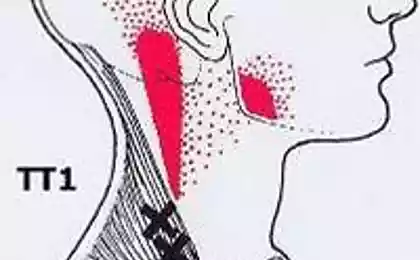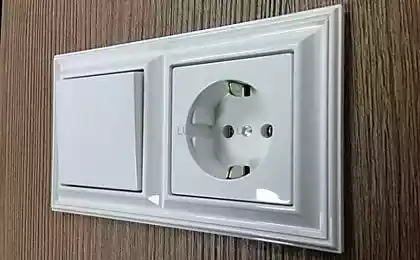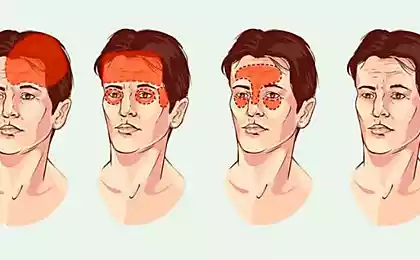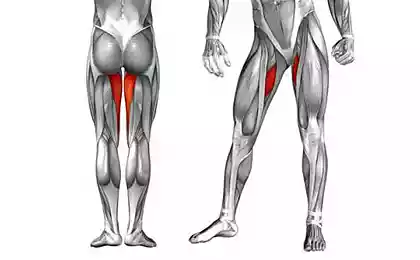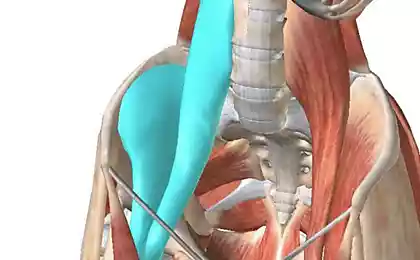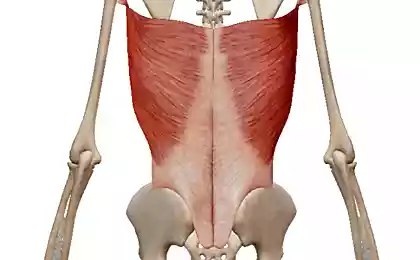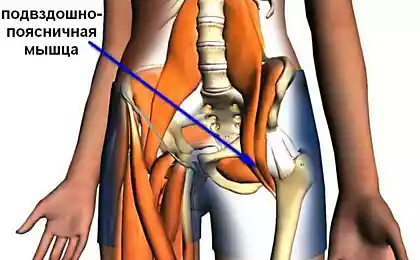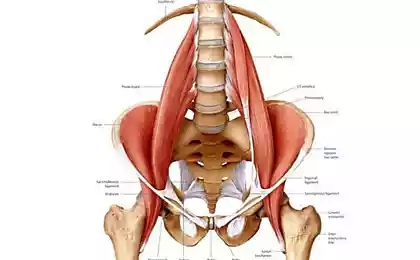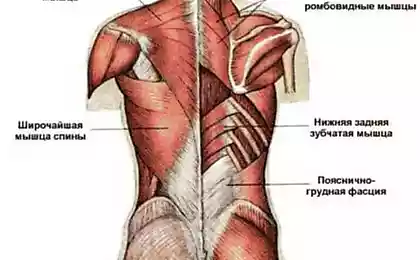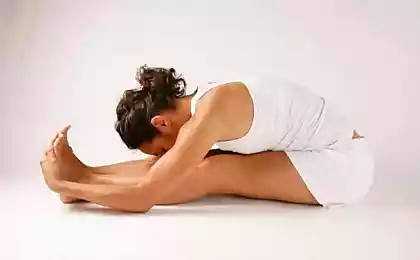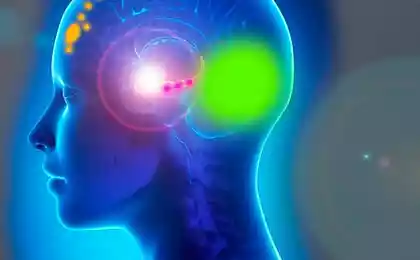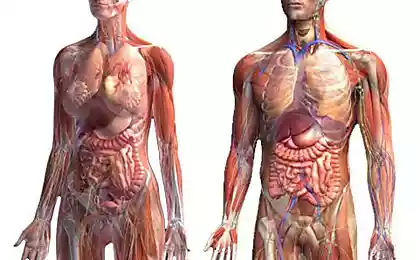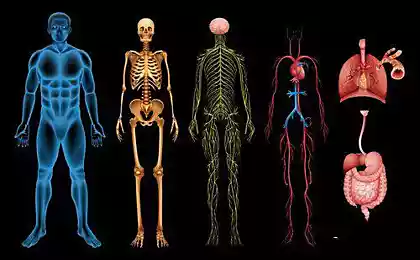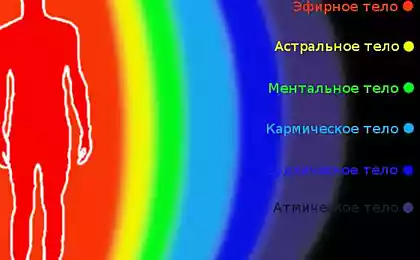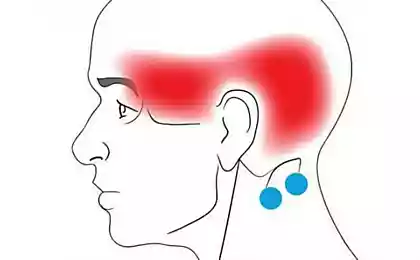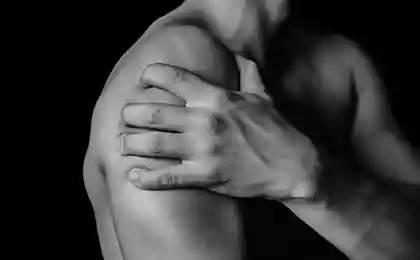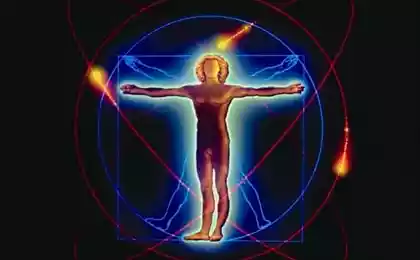974
What is the point of tension in the muscles and how to treat them
Taken as a whole large muscles is considered a single organ of the body. The system includes approximately 200 paired muscles (located on the right and left sides of the body), accounting for 40-50% of total body weight. Muscles, from the biggest to the smallest, from the bone to the organic — participate in all movements of the body. They surround our internal organs, help maintain posture, being reduced, they contribute to the maintenance of body temperature.
When muscles are damaged and cannot properly perform their functions, the systems that they support and are affected also operate at full strength. The conclusion is simple: when muscles do not perform their functions, it affects the whole body. However, until now the muscles are often "neglected children" of conventional medicine. No medical specialty is really not focused on the treatment of muscles. They are often just overlooked and may even be considered irrelevant in the overall treatment of trauma.
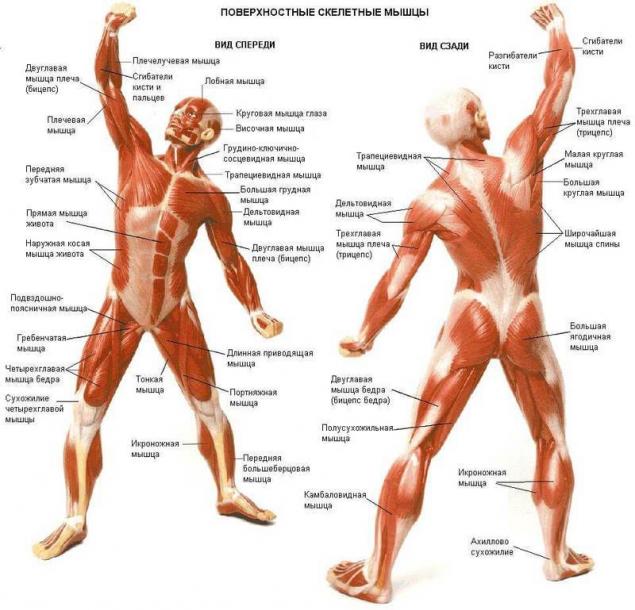
When there is trauma (fracture, sprain or dislocation), the treatment is mainly aimed at the crack, the damaged joint or tendon. As a result of unilateral treatment of countless people who were injured, returned to almost normal functioning but not to full. A number of movements have remained although slightly, but still limited, some appeared a little numb. Not implemented the final part of the treatment is to restore muscles.
Muscle is conductors providing stability and condition of the joints. When the bone or joint is damaged, muscles, surrounding, it is also necessary to pay attention so that they would have the same length and power as they possessed before the injury.
Athletes know like no other that even a slight muscle pain and numbness in the case of neglecting them can lead to chronic disease, inflammation, decrease in mobility. And after some time can follow more severe injury due to the fact that not took proper treatment. Coaches know very well such cases. To avoid inflammation of the tissues, they usually include treatment of muscles at rest and cold the first two parts of the famous RICE formula for the care of musculoskeletal injuries. (A complete list of requirements of RICE — rest, cold, compression, and uplift.) Some trainers recommend massage and (or) applying wet heat, taking a hot bath, to warm tissue in the hope of returning the muscles to a normal elastic state. But their actions have one drawback: they don't know that muscles get their own injuries.
Muscles are composed of individual ribbons (fibers) of muscle tissue located parallel to each other. These ribbons interact when the muscle contracts. Muscle tension or injury can lead to restriction of action of one or more of these strips, the result is what we call a busy station, iliturgi the cord. The point of tension is in the busiest section. If you imagine a muscle spasm like contraction of the entire muscle, the taut cord is something of microplasma separate strips of muscle. Muscle dysfunction caused by a tense plot, will remain as long as the intense plot will not be relaxed.
The muscular structure is flexible, elastic, resilient and strong. You feel when muscles are not sore, because your movements are smooth, light, unlimited. You can easily bend, can not hesitate to stand up, stretch and turn around. The joints move freely, without discomfort or limitations. When muscles are healthy, you don't think about them. The movement brings nothing but fun and pleasant excitement, When touched you can feel your muscles soft. You can easily feel the bones under them. Healthy muscles are sensitive to touch and do not hurt.
When the muscles have a point of tension as they shrink, lose elasticity and flexibility to the touch become hard. If the muscle remains clamped for a long time, decreasing its blood supply and it becomes more friable. Then you may experience persistent, deep, dull, aching pain, is called the syndrome of pain encircling.
Each stress point has its predictable pain that you can reproduce by pressing on the painful point. Quite interesting is the fact that the pain is often felt not in the place causing the pain point. Caused by this point the pain is known as remote pain, and felt it at some distance from the caller's pain points. This is very important to remember when selecting a pattern to define a muscle, which causes pain in your body.
So how in the muscle there are points of tension?
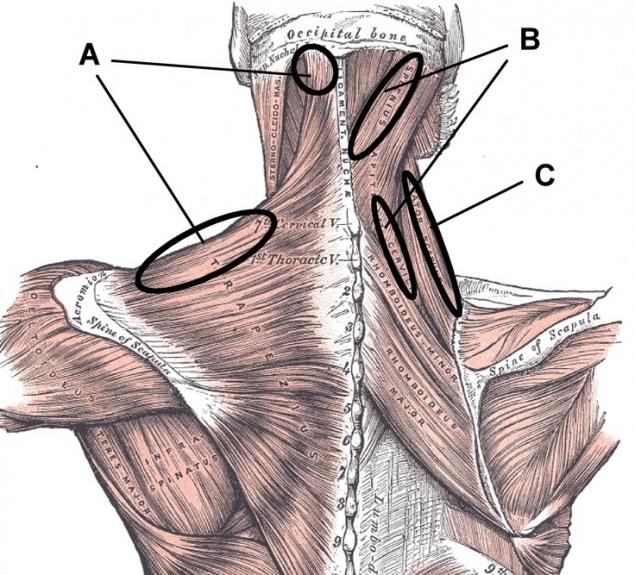
It usually starts with some form of mechanical damage or overstrain the muscles. People between 30 and 50 years, leading an active lifestyle are more prone to the occurrence of stress points, as a result — and suffering from encircling pain. However, not only sport activities can cause causing pain points. The dots can be formed due to the fact that you stumbled on the stairs, landed badly during a jump, sleeping in an awkward position, too far stretched to hit a tennis serve, was sitting at irrational are located by the computer, too actively playing football after the winter break, devotedly engaged in gardening in the first warm day of spring, carrying a box filled with books up the stairs, sat on the plane... the List of reasons for activation of the stress points of the infinite as the infinite possibilities of movement.
Mechanical muscle damage can occur as a result either of peretruhina, or overloading.
Peretruhina muscle often occurs when it is equally performs the same action again and again. Practicing the backhand while hitting hundreds of tennis balls in a row is a good example of peretruhina. The next day was sick elbow. What happened? Just the muscles of the forearm have long performed the same action that strained them a lot more than usual. They fell, they formed a strained region and a point of tension. The pain from these points and has to give in the elbow.
Something that I call "the trauma of forcing the coach", is a examples of muscle overload. Coach weight loss makes you stretch the quads, You've already done 3 sets of 12 times. Your coach encourages you: "Another approach, just one." Your body asks you to stop because your muscles are tired and you just can't imagine that they are able to take another approach. And yet you do it. When you get out of bed the next day, they discover that can't stand up straight because your hips hurt like hell. A lot more than usual after workouts. The pain lasts a few days, not weaker, and significantly affects your ability to walk, climb stairs and sit down. An overloaded muscle is the muscle which had to exert more effort than those for which it is generally physically capable.
Muscles can be overloaded as a result of three actions. In the example above, the injury arose because of a recurring overload.
In the case of acute overload you suddenly realize is too great muscular effort. Imagine the following scene. Martial arts master demonstrates a throw to an inexperienced student. While he grabs the student and tries to lay it on the ground, the pupil resists for life and death. The result is acute congestion of the muscles of the back from the master of martial arts who suddenly had to cope with 80-pound weight on your back.
Long-term overload can occur, for example when you need to lift a heavy box of books up the stairs for 3-4 floors.
In addition to peretruhina and overload the source of the stress points in muscles can be a direct trauma (occurring on impact, for example, during a football match), as well as the injury caused from a fall or car accident. Hypothermia of the muscles can also lead to the development of pain-causing stress points.
Stress points are of two types. Passive dots represent the vast majority of the points of tension present in the muscles. They are at all. Passive points of tension arise as a result of poor posture, sprains, peretruhina, chronic diseases and repeated physical and emotional behaviours. Passive stress points lead to numbness and weakness in the muscles they affect, for limitation of motion of the joints that these muscles respond. Passive stress points do not disappear without direct exposure to them and can persist for many years.
Chronic compression of the top of the shoulders, experienced by almost everyone, is an example of a passive stress points in the trapezius muscle. You may feel muscle limited movement when trying to pull the top of your shoulder, tilting your head to one side. If you click on the center of the rounded part of the top of your shoulder, you will feel there, in all probability, painful knot. This is your stress point. It was formed due to the fact as you keep your arms and shoulders, or the fact that you during a conversation on the phone, pressed the phone to his ear with a shoulder.
After a small surge or sudden overload this passive point of tension can become active. Active point voltage, formed in the muscle, gives predictable pain model of distance, which is characteristic for the specific muscle. Each muscle has its own model of remote pain. For example, when the passive point of tension in the trapezius muscle is active, in addition to numbness, weakness and limited movement you will feel a deep kind of aching pain that can reach to the skull to the place behind the ear. The muscle can be so clamped, and tension is so irritated that the pain can reach from ear to ear.
To the point of tension have become active, something has to push this transition. This transformation may be gradual and take time. The muscles within the diseased area may be sensitive to touch. But pain will be only after will be cured stress point.
The pain from the points of the voltage changing its intensity during the day. It is enhanced during use of the muscle, stretching it, direct pressure on the painful point with prolonged or repetitive contraction of the muscles, in cold or wet weather, infection and stress. Conversely, the symptoms may decrease after short periods of rest and with slow, passive stretching of the muscles, especially when latching on to her wet heat.
It was already mentioned that points of tension can be directly activated by peretruhina, overload, direct trauma and hypothermia. But stress points can be activated indirectly. Diseases of the internal organs, especially the heart, gallbladder, kidneys and stomach, may give rise to a point of tension in the muscles connected with them. Joint disease or dysfunction, such as arthritis, adds additional stress on the nearby muscles and can serve as a source of these muscles stress points. They are also formed in the muscles from lack of movement or, conversely, those that are in a stressed state for a long period of time. Emotional stress also leads to these points.
If the muscle is in the patient zone formed by the other active points of stress, such points may develop in it. These points are called points of the satellites.
In General, the degree of muscle condition is a factor that largely determines whether passive point voltage is active. Strong muscles are less susceptible to activation of stress points than weak muscles. Active points of tension are often returned to a passive state after a stay sufficient time alone. However, the point of tension will not disappear without direct treatment. People often complain that the pain is back again, sometimes several years later. Lack of treatment is the cause of this.
So how to treat the point of tension?
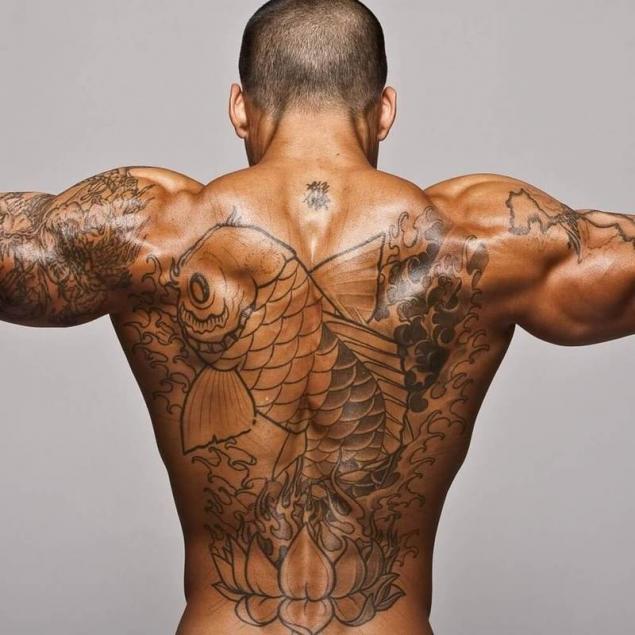
First, this point must be discovered in the muscle. This is done by palpation — feeling the muscles of your fingers. Once the point of tension is discovered, the therapist can do a anesthetic injection, acupuncturist use, acupuncture, a therapist will apply electrical or ultrasonic stimulation, perhaps in combination with the technique of manual massage or a technique called postisometric relaxation.
A chiropractor or a massage therapist will use directional pressure to the point of tension. This is the technique that can be used as self-medication. Its key point is to find the point of tension. Many of these points have predictable location. However, due to the physiological differences in the point of tension can be located in any muscle and in any place of this muscle.
Healthy muscles are supple and flexible, touching it causes no pain, But if you have a sore knee and you need to bend, the muscle on the inner thigh adjacent to the knee will no longer be that flexible. Her palms and fingers on this muscle, you will feel tight, tense areas. Just as they are stress points.
You will need to palpate your muscles, to get an idea about the difference between soft, flexible muscles and muscles which are tense areas. It may sound more complicated than it really is. Just relax and send all your curiosity on hand. Try to "see" with their fingers. You will enjoy because you will be able to feel.
Palpation of the muscles need to do the entire length. Touch his body right now — place your palm and fingers to the middle of the thigh. Imagine that your thigh muscle is clay or dough, which you knead. Push thigh whole hand: palm, fingers and fingertips. Quadriceps stretches across the length of the thigh from the pelvis to the knee. Try to find tense areas, moving your hand cross this muscle. Probe across the muscle fibers rather than along. If you probe across the muscle fibers, you can feel a tight cord; it will be sensitive to touch. In such a large muscle like the quadriceps, tight tape can be broad, such as electric wires. In smaller muscles tense tape can be to the touch as thin as guitar strings.
Once you have found a busy area, take from his fingers. Try to separate it from the surrounding muscle fibers. Follow its length, the willow reaches the region that is more sensitive than any other part of the hard tape. In addition, you may notice that during the directional pressure at this place there is an involuntary muscle spasm. That's what Janet Trevell calls convulsive departure. This is the most painful place and there is a point of tension.
Once you have found the point of tension, push in with finger, eraser, tennis ball or any other instrument for the treatment (information about them and see Applications). To keep the pressing need for 20-30 seconds. Use moderate pressure, as strong pressure is not always good. Hit with such force, to feel the density of the tape and the pain at the point, and keep the pressure on this level.
Then you will feel amazing things under your fingers will begin to get rid of muscle tension and decrease pain. At this time you can slightly increase the pressure. After several similar approaches at some point you will notice that the knee is not sore.
After working on the muscle it is very important to do some stretching. It lengthens the muscle, helps it return to a natural flexibility and length. (A description of every muscle in the book has instructions for stretching, which is suitable only to her.) Doing exercises on a stretching of muscles, it is very important at this time to ensure proper body position. Understand that you are in the correct position, you can only start the exercise — you don't have to stretch too far to muscle it felt. It is very important to practice on stretching several times a day. Much more useful to do b—7 short sessions than one long. When stretching you are teaching the muscle to return to normal 1 length. As in any other training mode, repetition is the key to victory.
The combination of stretching and proper breathing is very useful for muscles and is a necessary component of the treatment process. Muscles naturally relax during your vacation. Give your body with each exhalation to relax, and the muscles to stretch.
Applying moist heat completes the treatment. It provides a rush of blood to the muscle, stimulates its circulation in the diseased area, which helps to normalize the metabolism in the muscle. Moist heat also helps to ease some muscle pain that may occur as a result of clicking on a point of tension. With this, you can use a wet hot pad, applying it directly to the muscle for 20 minutes 1-2 times a day.
Take care of the adoption of postures that will allow you to apply moist heat directly to the relaxed muscle — the muscle that is not currently stressed. For example, if you want to apply a hot moist pad to the muscles on the lower back to do this best while lying on her stomach, placing a small pillow under the ankle. In this position the muscles of the lower back are relaxed. If you try browsing to apply moist heat to these muscles, the lumbar vertebr nye muscles will be hard to maintain the body in an upright condition. In this case, moist heat will be much less effective. I must say that a hot bath and a warm shower is not as useful as applying moist heat directly on the injured area.
Also interesting: the Psychological functions of the muscles
10 most interesting facts about muscles
To understand what is in the body causing the pain point, to be able to detect them in the muscles, relieve tension, relax and stretch the muscle, and finally applying moist heat to the painful place — part of self that can lead you to an active life without pain.
P. S. And remember, only by changing their consumption — together we change the world! ©
Source: svoistva-tela.ru/html/chto-takoe-tochki-naprjazhenija-i-kak-ikh-lechit.html
When muscles are damaged and cannot properly perform their functions, the systems that they support and are affected also operate at full strength. The conclusion is simple: when muscles do not perform their functions, it affects the whole body. However, until now the muscles are often "neglected children" of conventional medicine. No medical specialty is really not focused on the treatment of muscles. They are often just overlooked and may even be considered irrelevant in the overall treatment of trauma.

When there is trauma (fracture, sprain or dislocation), the treatment is mainly aimed at the crack, the damaged joint or tendon. As a result of unilateral treatment of countless people who were injured, returned to almost normal functioning but not to full. A number of movements have remained although slightly, but still limited, some appeared a little numb. Not implemented the final part of the treatment is to restore muscles.
Muscle is conductors providing stability and condition of the joints. When the bone or joint is damaged, muscles, surrounding, it is also necessary to pay attention so that they would have the same length and power as they possessed before the injury.
Athletes know like no other that even a slight muscle pain and numbness in the case of neglecting them can lead to chronic disease, inflammation, decrease in mobility. And after some time can follow more severe injury due to the fact that not took proper treatment. Coaches know very well such cases. To avoid inflammation of the tissues, they usually include treatment of muscles at rest and cold the first two parts of the famous RICE formula for the care of musculoskeletal injuries. (A complete list of requirements of RICE — rest, cold, compression, and uplift.) Some trainers recommend massage and (or) applying wet heat, taking a hot bath, to warm tissue in the hope of returning the muscles to a normal elastic state. But their actions have one drawback: they don't know that muscles get their own injuries.
Muscles are composed of individual ribbons (fibers) of muscle tissue located parallel to each other. These ribbons interact when the muscle contracts. Muscle tension or injury can lead to restriction of action of one or more of these strips, the result is what we call a busy station, iliturgi the cord. The point of tension is in the busiest section. If you imagine a muscle spasm like contraction of the entire muscle, the taut cord is something of microplasma separate strips of muscle. Muscle dysfunction caused by a tense plot, will remain as long as the intense plot will not be relaxed.
The muscular structure is flexible, elastic, resilient and strong. You feel when muscles are not sore, because your movements are smooth, light, unlimited. You can easily bend, can not hesitate to stand up, stretch and turn around. The joints move freely, without discomfort or limitations. When muscles are healthy, you don't think about them. The movement brings nothing but fun and pleasant excitement, When touched you can feel your muscles soft. You can easily feel the bones under them. Healthy muscles are sensitive to touch and do not hurt.
When the muscles have a point of tension as they shrink, lose elasticity and flexibility to the touch become hard. If the muscle remains clamped for a long time, decreasing its blood supply and it becomes more friable. Then you may experience persistent, deep, dull, aching pain, is called the syndrome of pain encircling.
Each stress point has its predictable pain that you can reproduce by pressing on the painful point. Quite interesting is the fact that the pain is often felt not in the place causing the pain point. Caused by this point the pain is known as remote pain, and felt it at some distance from the caller's pain points. This is very important to remember when selecting a pattern to define a muscle, which causes pain in your body.
So how in the muscle there are points of tension?

It usually starts with some form of mechanical damage or overstrain the muscles. People between 30 and 50 years, leading an active lifestyle are more prone to the occurrence of stress points, as a result — and suffering from encircling pain. However, not only sport activities can cause causing pain points. The dots can be formed due to the fact that you stumbled on the stairs, landed badly during a jump, sleeping in an awkward position, too far stretched to hit a tennis serve, was sitting at irrational are located by the computer, too actively playing football after the winter break, devotedly engaged in gardening in the first warm day of spring, carrying a box filled with books up the stairs, sat on the plane... the List of reasons for activation of the stress points of the infinite as the infinite possibilities of movement.
Mechanical muscle damage can occur as a result either of peretruhina, or overloading.
Peretruhina muscle often occurs when it is equally performs the same action again and again. Practicing the backhand while hitting hundreds of tennis balls in a row is a good example of peretruhina. The next day was sick elbow. What happened? Just the muscles of the forearm have long performed the same action that strained them a lot more than usual. They fell, they formed a strained region and a point of tension. The pain from these points and has to give in the elbow.
Something that I call "the trauma of forcing the coach", is a examples of muscle overload. Coach weight loss makes you stretch the quads, You've already done 3 sets of 12 times. Your coach encourages you: "Another approach, just one." Your body asks you to stop because your muscles are tired and you just can't imagine that they are able to take another approach. And yet you do it. When you get out of bed the next day, they discover that can't stand up straight because your hips hurt like hell. A lot more than usual after workouts. The pain lasts a few days, not weaker, and significantly affects your ability to walk, climb stairs and sit down. An overloaded muscle is the muscle which had to exert more effort than those for which it is generally physically capable.
Muscles can be overloaded as a result of three actions. In the example above, the injury arose because of a recurring overload.
In the case of acute overload you suddenly realize is too great muscular effort. Imagine the following scene. Martial arts master demonstrates a throw to an inexperienced student. While he grabs the student and tries to lay it on the ground, the pupil resists for life and death. The result is acute congestion of the muscles of the back from the master of martial arts who suddenly had to cope with 80-pound weight on your back.
Long-term overload can occur, for example when you need to lift a heavy box of books up the stairs for 3-4 floors.
In addition to peretruhina and overload the source of the stress points in muscles can be a direct trauma (occurring on impact, for example, during a football match), as well as the injury caused from a fall or car accident. Hypothermia of the muscles can also lead to the development of pain-causing stress points.
Stress points are of two types. Passive dots represent the vast majority of the points of tension present in the muscles. They are at all. Passive points of tension arise as a result of poor posture, sprains, peretruhina, chronic diseases and repeated physical and emotional behaviours. Passive stress points lead to numbness and weakness in the muscles they affect, for limitation of motion of the joints that these muscles respond. Passive stress points do not disappear without direct exposure to them and can persist for many years.
Chronic compression of the top of the shoulders, experienced by almost everyone, is an example of a passive stress points in the trapezius muscle. You may feel muscle limited movement when trying to pull the top of your shoulder, tilting your head to one side. If you click on the center of the rounded part of the top of your shoulder, you will feel there, in all probability, painful knot. This is your stress point. It was formed due to the fact as you keep your arms and shoulders, or the fact that you during a conversation on the phone, pressed the phone to his ear with a shoulder.
After a small surge or sudden overload this passive point of tension can become active. Active point voltage, formed in the muscle, gives predictable pain model of distance, which is characteristic for the specific muscle. Each muscle has its own model of remote pain. For example, when the passive point of tension in the trapezius muscle is active, in addition to numbness, weakness and limited movement you will feel a deep kind of aching pain that can reach to the skull to the place behind the ear. The muscle can be so clamped, and tension is so irritated that the pain can reach from ear to ear.
To the point of tension have become active, something has to push this transition. This transformation may be gradual and take time. The muscles within the diseased area may be sensitive to touch. But pain will be only after will be cured stress point.
The pain from the points of the voltage changing its intensity during the day. It is enhanced during use of the muscle, stretching it, direct pressure on the painful point with prolonged or repetitive contraction of the muscles, in cold or wet weather, infection and stress. Conversely, the symptoms may decrease after short periods of rest and with slow, passive stretching of the muscles, especially when latching on to her wet heat.
It was already mentioned that points of tension can be directly activated by peretruhina, overload, direct trauma and hypothermia. But stress points can be activated indirectly. Diseases of the internal organs, especially the heart, gallbladder, kidneys and stomach, may give rise to a point of tension in the muscles connected with them. Joint disease or dysfunction, such as arthritis, adds additional stress on the nearby muscles and can serve as a source of these muscles stress points. They are also formed in the muscles from lack of movement or, conversely, those that are in a stressed state for a long period of time. Emotional stress also leads to these points.
If the muscle is in the patient zone formed by the other active points of stress, such points may develop in it. These points are called points of the satellites.
In General, the degree of muscle condition is a factor that largely determines whether passive point voltage is active. Strong muscles are less susceptible to activation of stress points than weak muscles. Active points of tension are often returned to a passive state after a stay sufficient time alone. However, the point of tension will not disappear without direct treatment. People often complain that the pain is back again, sometimes several years later. Lack of treatment is the cause of this.
So how to treat the point of tension?

First, this point must be discovered in the muscle. This is done by palpation — feeling the muscles of your fingers. Once the point of tension is discovered, the therapist can do a anesthetic injection, acupuncturist use, acupuncture, a therapist will apply electrical or ultrasonic stimulation, perhaps in combination with the technique of manual massage or a technique called postisometric relaxation.
A chiropractor or a massage therapist will use directional pressure to the point of tension. This is the technique that can be used as self-medication. Its key point is to find the point of tension. Many of these points have predictable location. However, due to the physiological differences in the point of tension can be located in any muscle and in any place of this muscle.
Healthy muscles are supple and flexible, touching it causes no pain, But if you have a sore knee and you need to bend, the muscle on the inner thigh adjacent to the knee will no longer be that flexible. Her palms and fingers on this muscle, you will feel tight, tense areas. Just as they are stress points.
You will need to palpate your muscles, to get an idea about the difference between soft, flexible muscles and muscles which are tense areas. It may sound more complicated than it really is. Just relax and send all your curiosity on hand. Try to "see" with their fingers. You will enjoy because you will be able to feel.
Palpation of the muscles need to do the entire length. Touch his body right now — place your palm and fingers to the middle of the thigh. Imagine that your thigh muscle is clay or dough, which you knead. Push thigh whole hand: palm, fingers and fingertips. Quadriceps stretches across the length of the thigh from the pelvis to the knee. Try to find tense areas, moving your hand cross this muscle. Probe across the muscle fibers rather than along. If you probe across the muscle fibers, you can feel a tight cord; it will be sensitive to touch. In such a large muscle like the quadriceps, tight tape can be broad, such as electric wires. In smaller muscles tense tape can be to the touch as thin as guitar strings.
Once you have found a busy area, take from his fingers. Try to separate it from the surrounding muscle fibers. Follow its length, the willow reaches the region that is more sensitive than any other part of the hard tape. In addition, you may notice that during the directional pressure at this place there is an involuntary muscle spasm. That's what Janet Trevell calls convulsive departure. This is the most painful place and there is a point of tension.
Once you have found the point of tension, push in with finger, eraser, tennis ball or any other instrument for the treatment (information about them and see Applications). To keep the pressing need for 20-30 seconds. Use moderate pressure, as strong pressure is not always good. Hit with such force, to feel the density of the tape and the pain at the point, and keep the pressure on this level.
Then you will feel amazing things under your fingers will begin to get rid of muscle tension and decrease pain. At this time you can slightly increase the pressure. After several similar approaches at some point you will notice that the knee is not sore.
After working on the muscle it is very important to do some stretching. It lengthens the muscle, helps it return to a natural flexibility and length. (A description of every muscle in the book has instructions for stretching, which is suitable only to her.) Doing exercises on a stretching of muscles, it is very important at this time to ensure proper body position. Understand that you are in the correct position, you can only start the exercise — you don't have to stretch too far to muscle it felt. It is very important to practice on stretching several times a day. Much more useful to do b—7 short sessions than one long. When stretching you are teaching the muscle to return to normal 1 length. As in any other training mode, repetition is the key to victory.
The combination of stretching and proper breathing is very useful for muscles and is a necessary component of the treatment process. Muscles naturally relax during your vacation. Give your body with each exhalation to relax, and the muscles to stretch.
Applying moist heat completes the treatment. It provides a rush of blood to the muscle, stimulates its circulation in the diseased area, which helps to normalize the metabolism in the muscle. Moist heat also helps to ease some muscle pain that may occur as a result of clicking on a point of tension. With this, you can use a wet hot pad, applying it directly to the muscle for 20 minutes 1-2 times a day.
Take care of the adoption of postures that will allow you to apply moist heat directly to the relaxed muscle — the muscle that is not currently stressed. For example, if you want to apply a hot moist pad to the muscles on the lower back to do this best while lying on her stomach, placing a small pillow under the ankle. In this position the muscles of the lower back are relaxed. If you try browsing to apply moist heat to these muscles, the lumbar vertebr nye muscles will be hard to maintain the body in an upright condition. In this case, moist heat will be much less effective. I must say that a hot bath and a warm shower is not as useful as applying moist heat directly on the injured area.
Also interesting: the Psychological functions of the muscles
10 most interesting facts about muscles
To understand what is in the body causing the pain point, to be able to detect them in the muscles, relieve tension, relax and stretch the muscle, and finally applying moist heat to the painful place — part of self that can lead you to an active life without pain.
P. S. And remember, only by changing their consumption — together we change the world! ©
Source: svoistva-tela.ru/html/chto-takoe-tochki-naprjazhenija-i-kak-ikh-lechit.html
Don't involve the child in marital conflict
Arnold Smejanovic: Consciousness has no place in the body, and the connection of the brain and thought is a secret.
